New Historical Cartographic Records Supporting Chinese Sovereignty over the Diaoyu/Senkaku Islands
2016-08-17FEIJieLAIZhongping
FEI Jie LAI Zhongping
New Historical Cartographic Records Supporting Chinese Sovereignty over the Diaoyu/Senkaku Islands
FEI Jie*LAI Zhongping**
This article reports the discovery of new historical cartographic records concerning Diaoyu/Senkaku Island and its affiliated islands (hereinafter referred to as “the Diaoyu Islands”) by European and American cartographers. In total, 14 maps from the 18-19th centuries (prior to 1895) that recorded the Diaoyu Islands in English and French were discovered. Each of these maps refers to the Diaoyu Islands by using transliterations of their Chinese place names. This newly discovered, third party historical cartographic and toponymic evidence supports the claim that the Diaoyu Islands were discovered and named by the Chinese prior to the 1895 Treaty of Shimonoseki, and that this was widely known in Europe and America. Thus, this article lends support to the claim that these islands are, in historical terms, within Chinese territory.
Diaoyu/Senkaku Islands; Historical cartographic record; Transliteration of place name; Treaty of Shimonoseki
I. Introduction
The Diaoyu Island and its affiliated islands, also known as the Senkaku Islands in Japan, hereinafter referred to as “the Diaoyu Islands”, consist of Diaoyu Island,Huangwei-yu Island, Chiwei-yu Island, and their affiliated islands and reefs. The Diaoyu Islands are located to the northeast of Taiwan, in the waters between 123º20'-124º40' E and 25º40'-26º00' N on the continental shelf of the East China Sea. The Chinese government claims that the Diaoyu Islands are an inseparable part of the Chinese territory,1State Council Information Office, The People’s Republic of China, Diaoyu Dao, an Inherent Territory of China, at http://english.gov.cn/archive/white_paper/2014/08/23/content_281474 983043212.htm, 22 February 2016.however, territorial disputes over the islands between the Chinese and Japanese governments have persisted. Previous studies have discussed issues of sovereignty concerning the Diaoyu Islands in terms of history,2Liu Jiangyong, The Research on the Perjury of the Initial Exploration of the Diaoyu Dao Islands by Koga Tatushiro - Discussion on the Illegality of Japanese Government’s Purchase of the Diaoyu Dao Islands, Journal of Tsinghua University (Philosophy and Social Sciences), No. 4, 2014, pp. 26~41 (in Chinese); Tadayoshi Murata, translated by Wei Pinghe et al., On the Origin of Japan-China Territorial Issues: An Examination of Historical Evidence on the Diaoyu Islands Dispute, Beijing: Social Sciences Academic Press (China),2013 (in Chinese); Han Zhaoqing, Diaoyu Islands on Maps of China Drawn by Western Cartographers before the Sino-Japanese War of 1894-1895, Fudan Journal ( Social Sciences), No. 1, 2013, pp. 88~98 (in Chinese); Zheng Hailin, Sovereignty Issue of the Diaoyu Islands, Taipei: Strait Academic Press, 2011, pp. 1~455 (in Chinese); Ju Deyuan,Rectification of the Name of the Diaoyu Islands - Historical Sovereignty over the Diaoyu Islands and the Sources of International Law, Beijing: Kunlun Press, 2006, pp. 1~455 (in Chinese); Han-yi Shaw, The Diaoyutai/Senkaku Islands Dispute: Its History and an Analysis of the Ownership Claims of P.R.C., “R.O.C.”, and Japan, Occasional Papers/Reprints Series in Contemporary Asian Studies, No. 3, 1999, pp. 1~148; Kiyoshi Inoue, History and Sovereignty over the Diaoyu Islands, Hong Kong: 1970s Magazine Publishing House, 1973,pp. 1~144 (in Chinese); Hungdah Chiu, Japanese Analysis of Evidences on the Sovereignty over the Diaoyu Islands, Ming Pao Monthly, Vol. 75, 1972, pp. 2~16 (in Chinese); Hungdah Chiu, Chinese Analysis of Evidences on the Sovereignty over the Diaoyu Islands, Ming Pao Monthly, Vol. 78, 1972, pp. 53~63 (in Chinese); Wu Tianying, A Textual Research on the Ownership of the Diaoyu Islands Prior to the Sino-Japanese War of 1894-95: Also a Query to Professor Toshio Okuhara and Others, Beijing: China Democracy and Law Press, 2013 (in Chinese).politics,3Han-yi Shaw, The Diaoyutai/Senkaku Islands Dispute: Its History and an Analysis of the Ownership Claims of P.R.C., “R.O.C.”, and Japan, Occasional Papers/Reprints Series in Contemporary Asian Studies, No. 3, 1999, pp. 1~148; Sheila A. Smith, Japan and the East China Sea Dispute, at http://www.sciencedirect.com/science/article/pii/ S0030438712000324, 22 February 2016; Carlos Ramos-Mrosovsky, International Law’s Unhelpful Role in the Senkaku Islands, University of Pennsylvania Journal of International Law, Vol. 29, Issue 4, 2008, pp. 903~946; Zhongqi Pan, Sino-Japanese Dispute over the Diaoyu/Senkaku Islands: The Pending Controversy from the Chinese Perspective, Journal of Chinese Political Science, Vol. 12, No. 1, 2007, pp. 71~92; Peter Kien-hong Yu, Sino-Japanese Contention Over the Diaoyu Islands/Senkakus: A Hypothetical Analysis, Pacific Focus, Vol. 20, No. 1, 2005, pp. 285~314.and international law.4Zheng Hailin, Sovereignty Issue of the Diaoyu Islands, Taipei: Strait Academic Press,2011, pp. 1~455 (in Chinese); Han-yi Shaw, The Diaoyutai/Senkaku Islands Dispute:Its History and an Analysis of the Ownership Claims of P.R.C., “R.O.C.”, and Japan,Occasional Papers/Reprints Series in Contemporary Asian Studies, No. 3, 1999, pp. 1~148;Sheila A. Smith, Japan and the East China Sea Dispute, at http://www.sciencedirect.com/ science/article/pii/S0030438712000324, 22 February 2016; Carlos Ramos-Mrosovsky,International Law’s Unhelpful Role in the Senkaku Islands, University of Pennsylvania Journal of International Law, Vol. 29, Issue 4, 2008, pp. 903~946; Zhongqi Pan, Sino-Japanese Dispute over the Diaoyu/Senkaku Islands: The Pending Controversy from the Chinese Perspective, Journal of Chinese Political Science, Vol. 12, No. 1, 2007, pp. 71~92;Steven Wei Su, The Territorial Dispute over the Tiaoyu/Senkaku Islands: An Update, Ocean Development & International Law, Vol. 36, Issue 1, 2005, pp. 45~61; Jonathan I. Charney,Central East Asian Maritime Boundaries and the Law of the Sea, American Journal of International Law, Vol. 89, No. 4, 1995, pp. 724~749.
After their defeat in the first Sino-Japanese War (1894-1895), the Chinese were forced to sign the unequal Treaty of Shimonoseki. As a result, the Diaoyu Islands were occupied by the Japanese and ceded to Japan. After World War II (1939-1945), the Diaoyu Islands were to be returned to China in accordance with the Cairo Declaration, the Potsdam Proclamation and the Japanese Instrument of Surrender, however, the United States illegally administered the islands and illegally transferred the administration rights over the islands to Japan.5State Council Information Office, The People’s Republic of China, Diaoyu Dao, an Inherent Territory of China, at http://english.gov.cn/archive/white_paper/2014/08/23/ content_281474983043212.htm, 22 February 2016; Zheng Hailin, Sovereignty Issue of the Diaoyu Islands, Taipei: Strait Academic Press, 2011, pp. 1~455 (in Chinese); Han-yi Shaw,The Diaoyutai/Senkaku Islands Dispute: Its History and an Analysis of the Ownership Claims of P.R.C., “R.O.C.”, and Japan, Occasional Papers/Reprints Series in Contemporary Asian Studies, No. 3, 1999, pp. 1~148; Sheila A. Smith, Japan and the East China Sea Dispute, at http://www.sciencedirect.com/science/article/pii/S0030438712000324, 22 February 2016; Carlos Ramos-Mrosovsky, International Law’s Unhelpful Role in the Senkaku Islands, University of Pennsylvania Journal of International Law, Vol. 29, Issue 4,2008, pp. 903~946; Zhongqi Pan, Sino-Japanese Dispute over the Diaoyu/Senkaku Islands:The Pending Controversy from the Chinese Perspective, Journal of Chinese Political Science, Vol. 12, No. 1, 2007, pp. 71~92; Steven Wei Su, The Territorial Dispute over the Tiaoyu/Senkaku Islands: An Update, Ocean Development & International Law, Vol. 36,Issue 1, 2005, pp. 45~61; Jonathan I. Charney, Central East Asian Maritime Boundaries and the Law of the Sea, American Journal of International Law, Vol. 89, No. 4, 1995, pp. 724~749.
History is an important dimension in the study of the Diaoyu Islands, and it may have implications for today’s Sino-Japanese sovereignty claims in this regard. The Japanese government claims that Diaoyu Islands were terra nulliusprior to 1895,6Ministry of Foreign Affairs of Japan, The Basic View on the Sovereignty over the Senkaku Islands, at http://www.mofa.go.jp/region/asia-paci/senkaku/basic_view.html, 22 February 2016. Tatsuo Urano et al. eds., The Question of the Diaoyu Islands (Senkaku Islands),Research Materials Compilation, Hong Kong: Lizhi Press, 2001; Ministry of Foreign Affairs of Japan, The Basic View on the Senkaku Islands, at http://www.mofa.go.jp/region/ asia-paci/china/pdfs/r-relations_cn.pdf, 22 February 2016 (in Chinese).however, Chinese and Japanese historical documents demonstrate that, at that time, the Chinese had already discovered, named, developed, and had jurisdiction over the Diaoyu Islands.
During the 14th-19th centuries, Ryukyu (currently known as Okinawa)regularly paid tribute to the imperial court of China. In return, the Chinese imperial court routinely sent imperial envoys to Ryukyu. The Diaoyu Islands were located on the route between China and Ryukyu, and were utilized for navigation aids and relay stations. The earliest record of the Diaoyu Islands can be found in the book titled Voyage with a Tail Wind (Shun Feng Xiang Song) published circa 1403.7Voyage with a Tail Wind (Shun Feng Xiang Song), 1403?, reprint Washington D.C.: Library of Congress, 1975 (in Chinese).Records of the Diaoyu Islands can be found in official reports and other relevant literature written by Chinese imperial envoys, which indicated that the boundary between China and Ryukyu was the Black Water Trough (also known as the Okinawa Trough), and that the Diaoyu Islands were a part of Chinese territory.8Zheng Hailin, Sovereignty Issue of the Diaoyu Islands, Taipei: Strait Academic Press,2011, pp. 1~455 (in Chinese); Ju Deyuan, Rectification of the Name of the Diaoyu Islands - Historical Sovereignty over the Diaoyu Islands and the Sources of International Law,Beijing: Kunlun Press, 2006, pp. 1~455 (in Chinese); Han-yi Shaw, The Diaoyutai/Senkaku Islands Dispute: Its History and an Analysis of the Ownership Claims of P.R.C., “R.O.C.”,and Japan, Occasional Papers/Reprints Series in Contemporary Asian Studies, No. 3, 1999,pp. 1~148. Kiyoshi Inoue, History and Sovereignty over the Diaoyu Islands, Hong Kong:1970s Magazine Publishing House, 1973, pp. 1~144 (in Chinese); Hungdah Chiu, Japanese Analysis of Evidences on the Sovereignty over the Diaoyu Islands, Ming Pao Monthly,Vol. 75, 1972, pp. 2~16 (in Chinese); Hungdah Chiu, Chinese Analysis of Evidences on the Sovereignty over the Diaoyu Islands, Ming Pao Monthly, Vol. 78, 1972, pp. 53~63 (in Chinese).As of the 16th Century, China placed the Diaoyu Islands under its coastal defense system, and under the jurisdiction of the local government of Taiwan during theQing Dynasty (1644-1912).9Zheng Hailin, Sovereignty Issue of the Diaoyu Islands, Taipei: Strait Academic Press,2011, pp. 1~455 (in Chinese); Ju Deyuan, Rectification of the Name of the Diaoyu Islands - Historical Sovereignty over the Diaoyu Islands and the Sources of International Law,Beijing: Kunlun Press, 2006, pp. 1~455 (in Chinese); Han-yi Shaw, The Diaoyutai/Senkaku Islands Dispute: Its History and an Analysis of the Ownership Claims of P.R.C., “R.O.C.”,and Japan, Occasional Papers/Reprints Series in Contemporary Asian Studies, No. 3, 1999,pp. 1~148. Kiyoshi Inoue, History and Sovereignty over the Diaoyu Islands, Hong Kong:1970s Magazine Publishing House, 1973, pp. 1~144 (in Chinese); Hungdah Chiu, Japanese Analysis of Evidences on the Sovereignty over the Diaoyu Islands, Ming Pao Monthly,Vol. 75, 1972, pp. 2~16 (in Chinese); Hungdah Chiu, Chinese Analysis of Evidences on the Sovereignty over the Diaoyu Islands, Ming Pao Monthly, Vol. 78, 1972, pp. 53~63 (in Chinese).
Historical maps are often more informative than textual records. Many Chinese and Japanese historical maps indicate that the Diaoyu Islands were first named and administered by the Chinese.10Zheng Hailin, Sovereignty Issue of the Diaoyu Islands, Taipei: Strait Academic Press,2011, pp. 1~455 (in Chinese); Ju Deyuan, Rectification of the Name of the Diaoyu Islands - Historical Sovereignty over the Diaoyu Islands and the Sources of International Law, Beijing: Kunlun Press, 2006, pp. 1~455 (in Chinese); Kiyoshi Inoue, History and Sovereignty over the Diaoyu Islands, Hong Kong: 1970s Magazine Publishing House, 1973,pp. 1~144 (in Chinese); Hungdah Chiu, Chinese Analysis of Evidences on the Sovereignty over the Diaoyu Islands, Ming Pao Monthly, Vol. 78, 1972, pp. 53~63 (in Chinese).In addition, third party maps in European languages are objective and informative, and can be used to confirm this. Within previous studies, approximately 16 such maps have been identified (Annex 1).11Han Zhaoqing, Diaoyu Islands on Maps of China Drawn by Western Cartographers before the Sino-Japanese War of 1894-1895, Fudan Journal (Social Sciences), No. 1, 2013, pp. 88~98 (in Chinese); Zheng Hailin, Sovereignty Issue of the Diaoyu Islands, Taipei: Strait Academic Press, 2011, pp. 1~455 (in Chinese); Ju Deyuan, Rectification of the Name of the Diaoyu Islands - Historical Sovereignty over the Diaoyu Islands and the Sources of International Law, Beijing: Kunlun Press, 2006, pp. 1~455 (in Chinese); Hungdah Chiu,Chinese Analysis of Evidences on the Sovereignty over the Diaoyu Islands, Ming Pao Monthly, Vol. 78, 1972, pp. 53~63 (in Chinese).All in all,the Diaoyu Islands should not be considered terra nullius prior to 1895.
This study reports the discovery of 14 historical maps that recorded the Diaoyu Islands. Each of these maps, written in English or French, was charted by European and American cartographers prior to the 1895 Treaty of Shimonoseki. The earliest map was charted in 1797, and the latest was charted in 1872.
II. Historical Cartographic Records
In this section we will briefly introduce the newly discovered maps (Annex 1),and further discuss the names and references of the Diaoyu Islands found within.
1) Jean-Francois de Galaup La Perouse, Carte des Decouvertes, Faites en 1787 dans les Mers de Chine et de Tartarie, 179712Jean-Francois de Galaup La Perouse, Carte des Decouvertes, Faites en 1787 dans les Mers de Chine et de Tartarie, par les Fregates Francaises la Boussole et l’Astrolabe,depuis leur Depart de Manille jusqu’a leur Arrivee au Kamtschatka (1 ere. Feuille), Paris:L’Imprimerie de la Republique, 1797, at http://www.davidrumsey.com/luna/servlet/detail/ RUMSEY~8~1~20222~550043:Mers,-Chine,-Tartarie--1-, 22 February 2016.
This map, written in French, recorded the Diaoyu, Huangwei-yu, and Chiweiyu Islands as “I. Houpinsu”, “I. Tiaoyu-su”, and “I. Tche-oey sou” respectively (Fig. 1). Here, “su” and “sou” are transliterations of “yu”, meaning islet. The use of “I. Houpinsu” is actually a misnomer, since Houpinsu should be used to refer to the Huaping-yu Island, which lies to the southwest of Diaoyu Islands. “I. Tiaoyusu”, which is a transliteration of Diaoyu-yu (Diaoyu Island), is also a misnomer. Therefore the author of the map mistook the Diaoyu Island for Huaping-yu Island,and further mistook the Huangwei-yu Island for the Diaoyu Island. “I. Tche-oey sou” is a transliteration of the Chinese place name “Chiwei-yu”.
2) John Cary, A New Map of China, from the Latest Authorities, 180113John Cary, A New Map of China, from the Latest Authorities, 1801, at http://www.davidrum sey.com/luna/servlet/detail/RUMSEY~8~1~21541~640033:A-new-map-of-China,-fromthe-latest, 22 February 2016.
This map, written in English, recorded the Diaoyu, Huangwei-yu, and Chiweiyu Islands as “Hao-yu-su”, “Hoan-oey-su”, and “Tshe-oey-su” respectively (Fig. 2). Each of these names are transliterations of the Chinese place names. Previous studies reported John’s map of China (1806), however the 1801 and 1806 versions differ significantly in terms of recording the Diaoyu Islands. The latter recorded the Diaoyu, Huangwei-yu, and Chiwei-yu Islands as “Houpin su”, “Tiaoyu su”, and “Tsheoey su”.14John Cary, A New Map of Chinese & Independent Tartary, from the Latest Authorities, 1806,at http://www.davidrumsey.com/luna/servlet/detail/RUMSEY~8~1~21542~640034:Tartary ,-Chinese-&-independent-, 22 February 2016.
3) Mathew Carey, China, Divided into Its Great Provinces, 1811 and 181415Mathew Carey, China, Divided into Its Great Provinces, 1811 and 1814, at http://www. davidrumsey.com/maps890071-24382.html and http://www.davidrumsey.com/maps3286. html, 22 February 2016.
These maps are written in English. A previous study reported Carey’s 1796 version16Mathew Carey, China Divided into [Its] Great Provinces, 1796, at http://www.davidrumsey. com/maps860070-23904.html, 22 February 2016.which is similar to the 1811 version. The 1814 version is also similar to the 1811 version. These maps recorded the Diaoyu, Huangwei-yu, and Chiwei-yu Islands as “Haoyusu”, “Hoanoeysu”, and “Tsheoeysu” respectively (Fig. 3).
4) John Thomson, Tartary, 181417John Thomson, Tartary, N.R. Hewitt sc., 10 Broad Str., Bloomsbry., London. Drawn and engraved for Thomson’s New General Atlas, Sepr. 1st., 1814.
This map, written in English, recorded the Diaoyu, Huangwei-yu, and Chiweiyu Islands as “Houpin su”, “Tiaou su”, and “Tche oey sou” respectively (Fig. 4).
5) Adrien Hubert Brue, L’Asie 4, 181418Adrien Hubert Brue, L’Asie 4, 1814, at http://www.davidrumsey.com/maps1030047-25565. html, 22 February 2016.
This map, written in French, recorded the Diaoyu, Huangwei-yu, and Chiweiyu Islands as “I. Hou-pin-su”, “I. Tiaoyu-su”, and “I. Tsheouyesou” respectively. In addition, this map incorrectly recorded the Northern Three Islands of Taiwan (Bei Fang San Yu) as “I. Hao-yu-su” (Fig. 5). “Hao-yu-su” and “Tiaoyu-su” are both transliterations of the Chinese place name “Diaoyu-yu”, meaning Diaoyu Island. The Northern Three Islands of Taiwan are composed of the Pengchia-yu, Mianhuayu, and Huaping-yu Islands from north to south, which lie between the Diaoyu Islands and Taiwan Island.
6) Fielding Lucas Jr., China, 182319Fielding Lucas Jr., China, 1823, at http://www.davidrumsey.com/maps6286.html, 22 February 2016.
This map, written in English, recorded the Diaoyu and Chiwei-yu Islands as “Haoyusu” and “Tsheceyou” respectively, but omitted the Huangwei-yu Island (Fig. 6).
7) Sidney Hall, China, 182820Sidney Hall, China, 1828, at http://www.davidrumsey.com/maps3989.html, 22 February 2016.
This map, written in English, recorded the Diaoyu and Huangwei-yu Islands as “Houpin su”, “Tyaoisu”, but omitted the Chiwei-yu Island (Fig. 7).
8) John Arrowsmith, China, 184421John Arrowsmith, China, 1844, at http://www.davidrumsey.com/maps872.html, 22 February 2016.
This map, written in English, recorded the Diaoyu, Huangwei-yu, and Chiweiyu Islands as “Hoapin-su”, “Tiaoyu-su”, and “Rock” respectively (Fig. 8).
9) J. Andriveau-Goujon, Carte de l’Empire Chinois et du Japon, 184722J. Andriveau-Goujon, Carte de l’Empire Chinois et du Japon, 1847, at http://www.davidru msey.com/maps1100406-26346.html, 22 February 2016.
This map, written in French, recorded the entire Diaoyu Islands as “I. Tiaoyusu”, but omitted the Huangwei-yu and Chiwei-yu Islands. In addition, it recorded the Pengchia-yu Island as “Haoyusu”, which is actually a transliteration of Diaoyu-yu (Diaoyu Island) (Fig. 9). Pengchia-yu Island is one of the Northern Three Islands of Taiwan.
10) George Frederick Cruchley, China, 185023George Frederick Cruchley, China, Selection of Maps from Cruchley's General Atlas, for the Use of Schools and Private Tuition, London, 1850, at http://www.geographicus.com, 22 February 2016.
This map, written in English, recorded the entire Diaoyu Islands (including the Diaoyu, Huangwei-yu and Chiwei-yu Islands) as “Tia-yu-su” (Fig. 10).
11) Alvin Jewett Johnson, Johnson’s China East Indies Australia and Oceanica,186024Alvin Jewett Johnson, Johnson’s China East Indies Australia and Oceanica, 1860, at http:// www.davidrumsey.com/maps1751.html, 22 February 2016.
This map, written in English, recorded the entire Diaoyu Islands (including the Diaoyu, Huangwei-yu and Chiwei-yu Islands) as the “Tiaoyu su” (Fig. 11).
12) Alexander Keith Johnston, China and Japan, 186125Alexander Keith Johnston, China and Japan, 1861, at http://www.davidrumsey.com/maps33 5.html, 22 February 2016.
This map, written in English, recorded the Diaoyu and Huangwei-yu Islands as “Hoa-pin-sin” and “Tia-yu-su” respectively, but omitted the Chiwei-yu Island (Fig. 12).
13) Alvin Jewett Johnson, Johnson’s China, 186426Alvin Jewett Johnson, Johnson’s China, in A. J. Johnson, Johnson's New Illustrated Family Atlas, New York: Johnson and Ward, 1862, at http://www.geographicus.com/P/AntiqueMap/ China2-johnson-1862, 22 February 2016.
This map, written in English, recorded the Diaoyu and Huangwei-yu Islands as “Hawaping san” and “Tiayu su” respectively, but omitted Chiwei-yu Island (Fig. 13).
14) G.H. Swanston and J. Bartholomew, China, 187227G.H. Swanston and J. Bartholomew, China, 1872, at http://www.davidrumsey.com/luna/servl et/detail/RUMSEY~8~1~3456~400026:China-, 22 February 2016.
This map, written in English, recorded the Diaoyu and Huangwei-yu Islands as “Hawaping san” and “Tiayu su” respectively, but omitted Chiwei-yu Island (Fig. 14).
III. Discussion on the Toponymy of the Diaoyu Islands
In this section we conduct a preliminary toponymic analysis of the Diaoyu Islands based on these newly discovered maps and previously discovered thirdparty maps. Each of these maps were in European languages and were charted by European and American cartographers.
The names of the Diaoyu Islands in third party maps may be categorized into three types (Annex 1) based on the names used within.
Type 1 maps use “Tiaoyusu”, “Hoangoueysu” and “Tchehoeyou”, which refer to Diaoyu Island, Huangwei-yu Island, and Chiwei-yu Island respectively (Annex 1). These are transliterations of Chinese place names,28Wu Tianying, A Textual Research on the Ownership of the Diaoyu Islands Prior to the Sino-Japanese War of 1894-95: Also a Query to Professor Toshio Okuhara and Others, Beijing:China Democracy and Law Press, 2013 (in Chinese).and were widely adopted by many maps in the 18th and 19th century. The spelling of the island names in some maps changed slightly, in particular, some maps spelled “Tiaoyusu” as “Haoyusu”.
This type of island names originated from Antoine Gaubil’s French map Carte Des Isles de Lieou-Kieou (1751), which is the earliest record of the Diaoyu Islands in European maps.29R.P. Gaubil, Carte Des Isles de Lieou-Kieou, 1751; Maurus Fang Hau, The Collected Works of Maurus Fang Hau, Revised and Edited by the Author on Sixtieth Birthday, Taipei,Student Book Company, 1969 (in Chinese).Gaubil’s map recorded the Diaoyu Islands as “Tiaoyusu”,“Hoangoueysu” and “Tchehoeyou”, referring to Diaoyu Island, Huangwei-yu Island, and Chiwei-yu Island, respectively. This map is actually a translation of the relevant map by Xu Baoguang, a Chinese official.30Xu Baoguang, Records of Messages from Chong-shan (Zhong Shan Chuan Xin Lu), in Series of Index to SI-KU-QUAN-SHU - Histories, Vol. 256, Jinan: Qilu Press, 1996. Xu,a deputy title-conferring envoy, was sent to Ryukyu by the Qing Dynasty in 1718. The historical background is that, the Ryukyu Kingdom was a tributary State of the Chinese Ming (1368-1644 AD) and Qing Dynasties (1644-1911 AD).
The island names of Type 2 include “Houpinsu”, “Tiaoyu-su”, and “Tche-oey sou” originated from the transliterations of Chinese place names (Annex 1). The island names first appeared in Carte des Decouvertes, Faites en 1787 dans les Mers de Chine et de Tartarie.31Jean-Francois de Galaup La Perouse, Carte des Decouvertes, Faites en 1787 dans les Mers de Chine et de Tartarie, par les Fregates Francaises la Boussole et l’Astrolabe,depuis leur Depart de Manille jusqu’a leur Arrivee au Kamtschatka (1 ere. Feuille), Paris:L’Imprimerie de la Republique, 1797, at http://www.davidrumsey.com/luna/servlet/detail/ RUMSEY~8~1~20222~550043:Mers,-Chine,-Tartarie--1-, 22 February 2016.
The island names of Type 2 are more influential than those of Type 1 in the late 19th century. An interesting example is Cary’s A New Map of China. In Cary’s 1801 version, the island names of Type 1 were adopted, whereas his 1806 version used those of Type 2. During the 1840s, the British navy surveyed and mapped the Diaoyu Islands, and also adopted the island names of Type 2.
The island names of Type 2, however, contain two misnomers. The Huangweiyu Island was incorrectly labeled as “Tiaoyu-su”, and the Diaoyu Island misnamed as “Houpinsu”. “Tiaoyu-su” is the transliteration of Diaoyu-yu, where the latter “yu”means islet. “Diaoyu-yu” is another name of Diaoyu Island, whereas “Houpinsu”is actually a transliteration of Huaping-yu Island. Huaping-yu Island lies to the northeast of Taiwan Island, and to the southwest of Diaoyu Island. Diaoyu Island lies to the southwest of Huangwei-yu Island. In addition, the Chiwei-yu Island was recorded as “Tche-oey sou” in earlier maps, but was later labeled as “Rock” and “Raleigh Rock” in later maps.
Type 3 simply records the Diaoyu Islands as “I. Tiaoyu-su” or “Tiaoyu su”.
The Japanese government claims that the Diaoyu Islands were terra nullius,and were acquired by virtue of “discovery-occupation”. As was stated above,previous studies suggested that the claim was not supported by historical documents. Our discovery of cartographic and toponymic evidence further indicates that the Diaoyu Islands had already been discovered and named by the Chinese centuries before they were occupied by the Japanese, and that this fact was widely known in Europe and America. These historical records support that these islands were not terra nullius prior to the First Sino-Japanese War (1894-1895).
IV. Discussions on the Use of “Pinnacle Islands”,“Pinnacle Group” and “Pinnacle Island”
“Pinnacle Islands”, “Pinnacle group” and “Pinnacle Island” are another group of important place names. The book The China Pilot 1861 recorded the two place names in the section “Hoa-pin-su, Pinnacle, and Ti-a-usu Islands”.
This group forms a triangle, of which the hypotenuse, or distance between Hoa-pin-su and Ti-a-usu, extends about 15 miles, and that between Hoa-pinsu and the southern Pinnacle Island about 2 miles … The extreme height of Hoa-pin-su is 1,181 feet … the north face of the island is in lat. 25º47ˊ7˝ N.,long. 123º30½ˊ E. … The Pinnacle group, which is connected by a reef and bank of soundings with Hoa-pin-su … Ti-a-usu, bearing N.E. northerly 15 miles from Hoa-pin-su, appears to be composed of huge boulders of a greenish porphyritic stone. The capping of this island, from about 60 feet, to its summit,which is about 600 feet from the level of the sea, is covered with a loosebrushwood, but no trees of any size.32John W. King, The China Pilot 1861: The Coasts of China, Korea, and Tartary; The Sea of Japan, Gulfs of Tartary and Amúr, and Sea of Okhotsk; and the Babuyan, Bashí, Formosa,Meiaco-Sima, Lu-chu, Ladrones, Bonin, Japan, Saghalin, and Kuril Islands, third edition,published by order of the Lords Commissioners of the Admiralty, London: printed for Hydrographic office, Admiralty, 1861.
This record is an updated version of an earlier record,33Robert Loney ed., The China Pilot: Part I, East Coast from Hong Kong to Shanghai, Chiefly from the Surveys of Captain Collinson, published by order of the Lords Commissioners of the Admiralty, London: printed for the Hydrographic Office, Admiralty, 1855.whereas similar records are also available in some later sources (Annex 1). “Pinnacle Islands” and “Pinnacle group” referred to the Nanxiao Dao and Beixiao Dao Islets in mid-19th century literature. It is noteworthy that the Nanxiao Dao and Beixiao Dao Islands are two islets of the Diaoyu Islands, and lie to the southeast of the Diaoyu Island. The Japanese name of the Diaoyu Islands “Senkaku Islands” is a translation of the “Pinnacle Islands” or “Pinnacle group”, however, the Japanese use this word to name the entire group of Diaoyu Islands, not the islets of Nanxiao Dao and Beixiao Dao. Thus, the Japanese name of the Diaoyu Islands, “Senkaku Islands”,is a misnomer. It is a translation of “Pinnacle Islands”, however, the latter is the European name of the Nanxiao Dao and Beixiao Dao Islets, not the entire set of Diaoyu Islands.
The meaning of the term “Pinnacle Island” is different, and it does not correspond to any part of the Diaoyu Islands. It may have first appeared in Johnston’s China and Japan (1861) and the China Sea Pilot, and was used in G.H. Swanston and J. Bartholomew’s China (1872) (Annex 1). According to its location shown in the above mentioned maps and the coordinates described in the China Sea Pilot, we can know that it refers to the Huaping-yu Island, an island lying between Taiwan and the Diaoyu Islands.
V. Conclusions
We report the discovery of 14 maps that recorded the Diaoyu Islands. Each of these maps were charted by European and American cartographers during the 18th and 19th centuries. The names of the Diaoyu Islands in these maps may be categorized into three types: Type 1, which uses “Tiaoyusu”, “Hoangoueysu”and “Tchehoeyou” to refer to Diaoyu Island, Huangwei-yu Island, and Chiwei-yu Island, respectively; Type 2, which uses “Houpinsu”, “Tiaoyu-su”, and “Tcheoey sou” to refer to Diaoyu Island, Huangwei-yu Island, and Chiwei-yu Island,respectively; and, Type 3, where “Tiaoyu su” refers to the entire Diaoyu Islands. All the names of the islands are transliterations of the pronunciation of Chinese place names. As a whole, our study supports the idea that the Diaoyu Islands are,in historical terms, Chinese territory, and should not be considered as terra nullius prior to the Treaty of Shimonoseki (1895).
Annex 1 Three Types of Historical Names for the Diaoyu Islands as Recorded in Maps in European Languages

Type 1: Usage of “Tiaoyusu”, “Hoangoueysu” and “Tchehoeyou” to Respectively Refer to Diaoyu Island, Huangwei-yu Island, and Chiwei-yu Island

“R” refers to previously discovered maps.39 Samuel Dunn, China, Divided into Its Great Provinces, and the Isles of Japan, London:printed for Rob. Sayer, 1774; Ju Deyuan, Rectification of the Name of the Diaoyu Islands - Historical Sovereignty over the Diaoyu Islands and the Sources of International Law,Beijing: Kunlun Press, 2006, pp. 1~455 (in Chinese).40 Jo. Roberts, The Empire of China, with Its Principal Divisions: Drawn from the Surveys Made by the Jesuits, London: printed for Robt. Sayer and John Bennett, No. 53, in Fleet Street, as the Act directs, 1775; Zheng Hailin, Sovereignty Issue of the Diaoyu Islands,Taipei: Strait Academic Press, 2011, pp. 1~455 (in Chinese).41 Aaron Arrowsmith, Arrowsmith’s Map of the World on a Globular Projection, Exhibiting Particularly the Nautical Researches of Captain James Cook, with All the Recent Discoveries to the Present Time, 1794; Ju Deyuan, Rectification of the Name of the Diaoyu Islands - Historical Sovereignty over the Diaoyu Islands and the Sources of International Law, Beijing: Kunlun Press, 2006, pp. 1~455 (in Chinese).42 J. Russell, China with the Tributary States, printed on 18 July 1795; Han Zhaoqing, Diaoyu Islands on Maps of China Drawn by Western Cartographers before the Sino-Japanese War of 1894-1895, Fudan Journal (Social Sciences), No. 1, 2013, pp. 88~98 (in Chinese).43 Mathew Carey, China Divided into [Its] Great Provinces, 1796, at http://www.davidrumsey. com/maps860070-23904.html, 22 February 2016; Han Zhaoqing, Diaoyu Islands on Maps of China Drawn by Western Cartographers before the Sino-Japanese War of 1894-1895,Fudan Journal (Social Sciences), No. 1, 2013, pp. 88~98, pp. 88~98 (in Chinese).44 John Cary, A New Map of China, from the Latest Authorities, 1811; Han Zhaoqing, Diaoyu Islands on Maps of China Drawn by Western Cartographers before the Sino-Japanese War of 1894-1895, Fudan Journal (Social Sciences), No. 1, 2013, pp. 88~98 (in Chinese); Ju Deyuan, Rectification of the Name of the Diaoyu Islands - Historical Sovereignty over the Diaoyu Islands and the Sources of International Law, Beijing: Kunlun Press, 2006, pp. 1~455 (in Chinese).
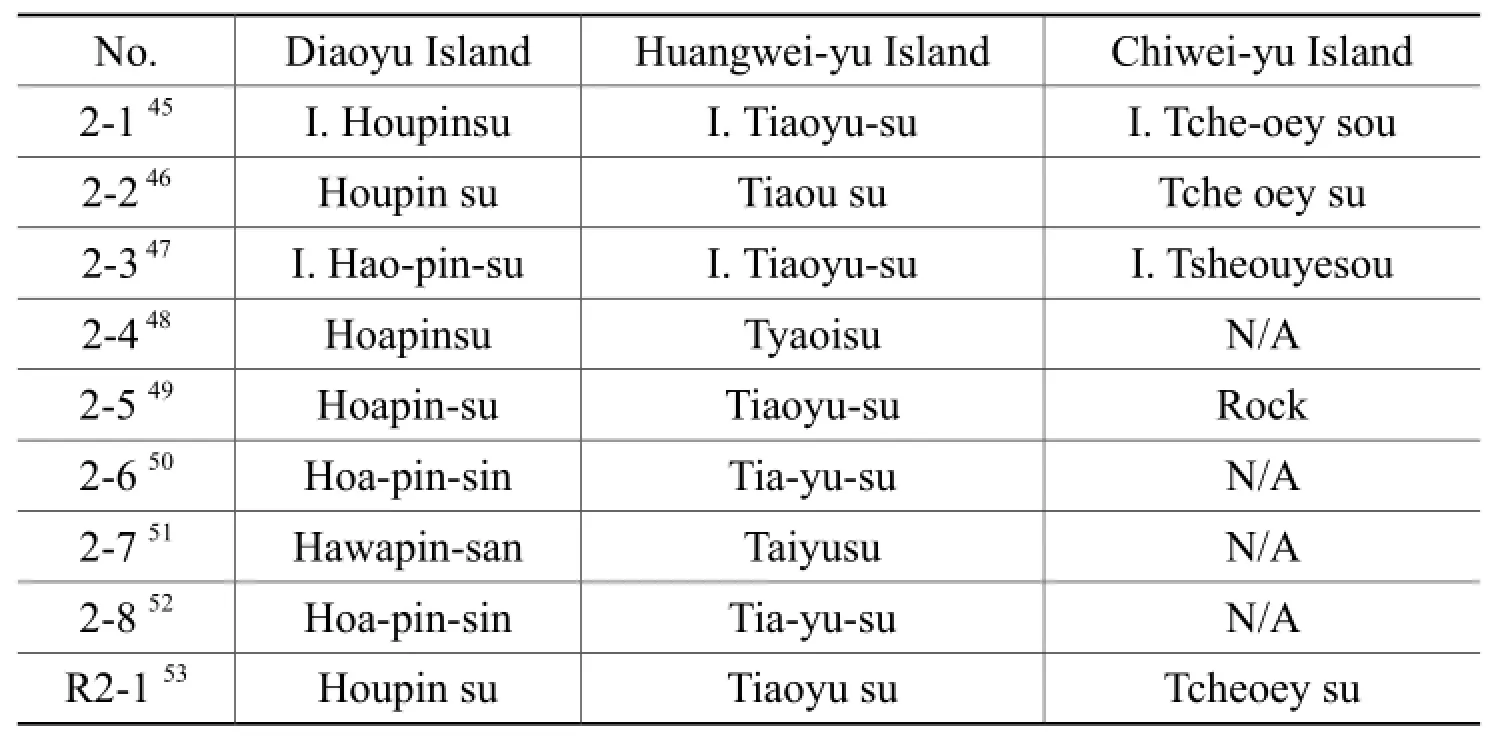
Type 2: Usage of “Houpinsu”, “Tiaoyu-su”, and “Tche-oey sou”, to Respectively Refer to Diaoyu Island, Huangwei-yu Island, and Chiwei-yu Island

Note: R2-3, R2-4, R2-5, and R2-6 recorded the Nanxiao Dao and Beixiao Dao Islands as “Pinnacle Islands” or “Pinnacle Group”. The Nanxiao Dao and Beixiao Dao Islands, lying to the southeast of the Diaoyu Island, are two islets of the Diaoyu Islands.54 G.W. Colton, China (with) Two Insets: Harbor & Island of Amoy and Map of Canton and Adjacent Islands. Published by J.H. Colton & Co. No. 172 William St. New York, 1856, at http://www.davidrumsey.com/maps3483.html, 22 February 2016; Zheng Hailin, Sovereignty Issue of the Diaoyu Islands, Taipei: Strait Academic Press, 2011, pp. 1~455 (in Chinese).55 John W. King, The China Pilot 1861: The Coasts of China, Korea, and Tartary; The Sea of Japan, Gulfs of Tartary and Amúr, and Sea of Okhotsk; and the Babuyan, Bashí, Formosa,Meiaco-Sima, Lu-chu, Ladrones, Bonin, Japan, Saghalin, and Kuril Islands, third edition,published by order of the Lords Commissioners of the Admiralty, London: printed for Hydrographic office, Admiralty, 1861; Ju Deyuan, Rectification of the Name of the Diaoyu Islands - Historical Sovereignty over the Diaoyu Islands and the Sources of International Law, Beijing: Kunlun Press, 2006, pp. 1~455 (in Chinese).56 China, East Coast Hong Kong to Gulf of Liautung, Compiled from Various Authorities in the Hydrographic Office, London: published at the Admiralty, 1877; Ju Deyuan,Rectification of the Name of the Diaoyu Islands - Historical Sovereignty over the Diaoyu Islands and the Sources of International Law, Beijing: Kunlun Press, 2006, pp. 1~455 (in Chinese).57 Frederick W. Jarrad, The China Sea Directory, Vol. 4. Comprising the Coasts of Korea,Russian Tartary, Japan Islands, Gulfs of Tartary and Amúr, and the Sea of Okhotsk, also the Meiaco, Liu-kiu, Linschoten, Mariana, Bonin, Saghalin, and Kuril Islands, second edition, compiled from various sources, published by order of the Lords Commissioners of the Admiralty, London: printed for Hydrographic office, Admiralty, 1884; Zheng Hailin,Sovereignty Issue of the Diaoyu Islands, Taipei: Strait Academic Press, 2011, pp. 1~455 (in Chinese); Ju Deyuan, Rectification of the Name of the Diaoyu Islands - Historical Sovereignty over the Diaoyu Islands and the Sources of International Law, Beijing: Kunlun Press, 2006, pp. 1~455 (in Chinese).58 China Sea, Compiled from the Latest Government Surveys, 1886, at http://acms.sl.nsw.gov. au/album/ItemViewer.aspx?itemid=915216&suppress=N&imgindex=1, 22 February 2016;Ju Deyuan, Rectification of the Name of the Diaoyu Islands - Historical Sovereignty over the Diaoyu Islands and the Sources of International Law, Beijing: Kunlun Press, 2006, pp. 1~455 (in Chinese).

Type 3: Usage of “Tiaoyu su” Refers to the Entire Diaoyu Islands
Annex 2 Records of the Diaoyu Islands in Newly Discovered Historic Maps
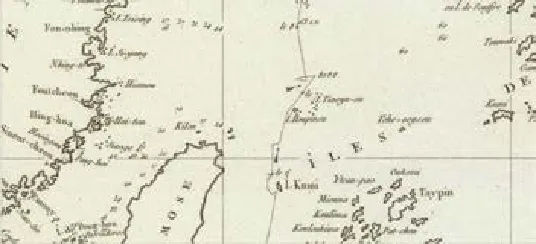
Fig.1 Jean-Francois de Galaup La Perouse, Carte des Decouvertes, Faites en 1787 dans les Mers de Chine et de Tartarie, 1797
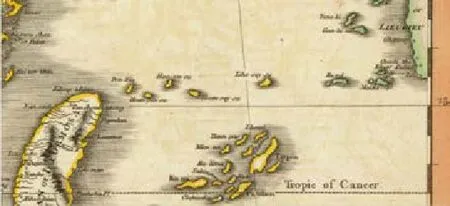
Fig.2 John Cary, A New Map of China, from the Latest Authorities, 1801
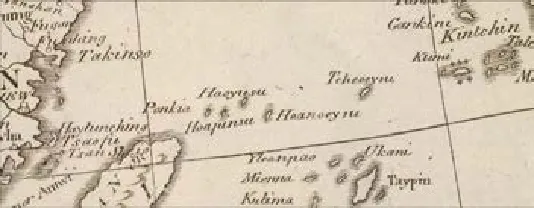
Fig.3 Mathew Carey, China, Divided into Its Great Provinces, 1811
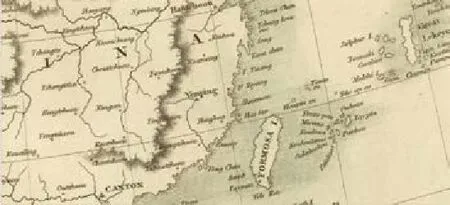
Fig.4 John Thomson, Tartary, 1814
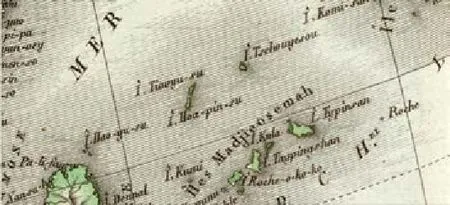
Fig.5 Adrien Hubert Brue, L'Asie 4, 1814
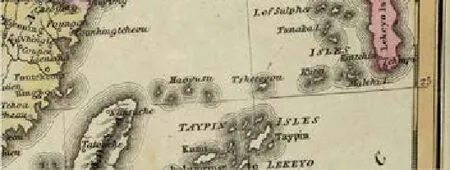
Fig.6 Fielding Lucas Jr., China, 1823
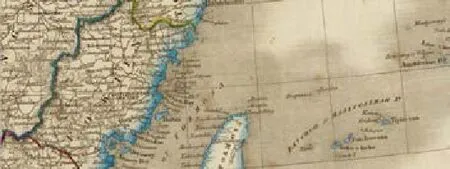
Fig.7 Sidney Hall, China, 1828
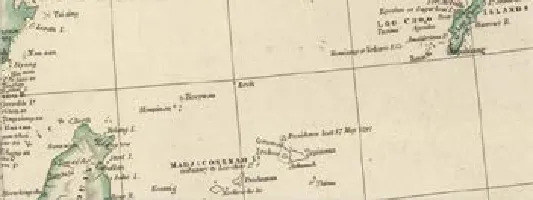
Fig.8 John Arrowsmith, China, 1844
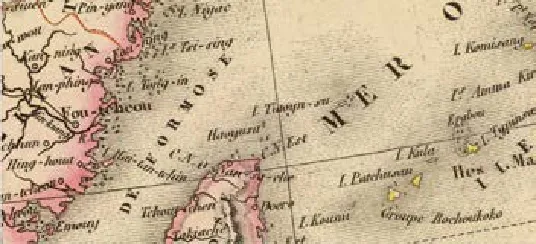
Fig.9 J. Andriveau-Goujon, Carte de l'Empire Chinois et du Japon, 1847

Fig.10 G.F. Cruchley, China, 1850

Fig.12 Alexander Keith Johnston, China and Japan, 1861
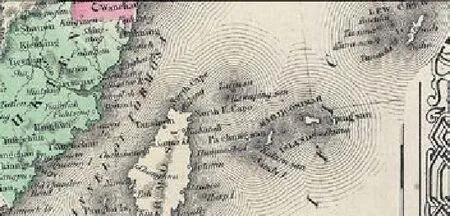
Fig.13 Alvin Jewett Johnson, Johnson's China, 1864

Fig.14 G.H. Swanston and J. Bartholomew, China, 1872
Editor (English): David Devlaeminck
© THE AUTHORS AND CHINA OCEANS LAW REVIEW
* FEI Jie, associate professor at Institute of Chinese Historical Geography, Fudan University,and visiting scholar at Department of History, University of Hamburg, Germany. Email:jiefei@fudan.edu.cn. This research was supported by the State Oceanic Administration of China (Grant No. CHINARE2014-04-05-03), the Universität Hamburg DAAD Project,and the Shanghai Municipality Committee of the Revolutionary Committee of the Chinese Kuomintang. Special thanks to Professors Ge Jianxiong, Dong Bo, Sun Liguang and David D. Zhang for their constructive suggestions.
** LAI Zhongping, professor at School of Earth Sciences, China University of Geosciences.
杂志排行
中华海洋法学评论的其它文章
- 中国拥有钓鱼岛主权的历史地图新证据
- Insurance Liability for Ships Sailing Beyond Their Designated Navigation Zones During Construction Activities on Islands in the South China Sea
- Exploitation of Resources in the Area and the Sponsoring State Responsibility:New Developments in China's Legislative Work Concerning the Deep Sea
- 南海岛礁建设中船舶超航区航行情况下的保险责任
- “区域”资源开发与担保国责任问题
——中国深海法制建设的新发展 - Port State Responsibility for Combating Vessel-Source Pollution: Enforcement and Safeguard Mechanisms
